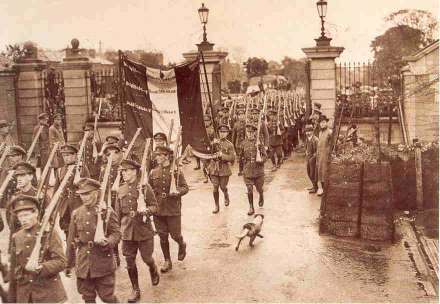Whiskey and the Green Ireland
Ireland
In the Emerald Isle, as Ireland is often called, the first official distillation license was granted to the Old Bushmills distillery in County Antrim in 1608. However, the true expansion of Irish whiskey began in 1823 when the English Parliament (which enacted a specific law regarding stills) and the Industrial Revolution provided John Jameson & Son and John Powers & Son with all the tools necessary for the expansion of Irish whiskey across the ocean, quickly establishing itself throughout the British Empire and the United States. The Scots, however, did not remain passive, and Glenlivet was the first, in 1853, to use the continuous column still for its spirits (the still was invented by a former Dublin customs inspector, Aeneas Coffey). This still allowed for the production of cereal alcohol at reduced costs and in a continuous manner, typically a light spirit made from unmalted grains. The new still was snubbed by the Irish because they believed it might alter their product, while for the Scots, its use was a breakthrough. They blended grain whisky with single malt, and by the late 1860s, they created the first blended whiskies.
The Irish pressured the English government to deny the new Scottish spirits the use of the name "whisky," but they lost the battle in 1909 when the English Parliament allowed the name whisky to be used for both Scottish blends and grain whiskies, which then began their conquest of the global market.
Despite this setback, Irish whiskey became one of the favorite drinks in the United States, and with hundreds of labels on the market, Ireland continued to be the world's largest producer of whiskey, at least until two events led to its decline.
The Irish War of Independence and American Prohibition

In April 1916, the outbreak of the Irish Revolution delivered a first and severe blow to whiskey exports already struggling from the dark years of World War I. In the following years, the partition of the island into Northern Ireland and the Republic of Ireland further intensified religious and social conflicts, soon leading the country to civil war. One of the consequences of this war was the establishment of customs barriers between Ireland and the United Kingdom, which ultimately crippled the sale of Irish whiskey that was now reliant solely on the American market. In 1919, in the United States, to combat the widespread problem of alcoholism, the prohibition of the production, sale, and importation of alcoholic beverages came into effect, leading to the closure of most small distilleries in Ireland and significantly reducing the output of larger ones. Prohibition was repealed in 1933, but by then Ireland was unable to meet the renewed American demand. A hint of recovery for Irish producers did not come until 1966, when three of the remaining five distilleries—Cork, Jameson, and Power—founded the Irish Distillery Company, to which the other two distilleries, Bushmills and Coleraine, would join in 1972.
